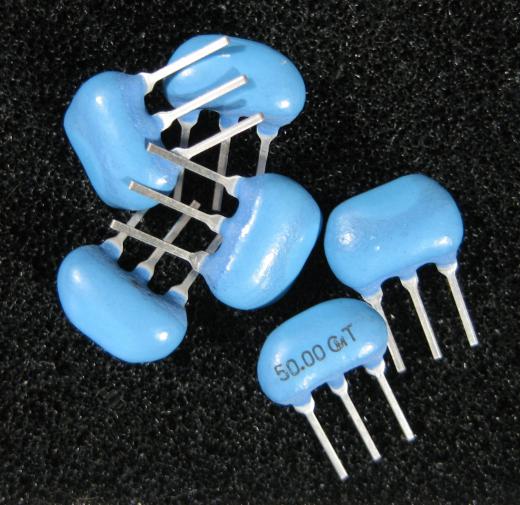Introduction
The Bipolar Junction Transistor (BJT) may appear as an unassuming electronic component, but it’s a technological powerhouse that has transformed the world of electronics. With the ability to amplify and switch electrical signals, the BJT plays a pivotal role in the devices we encounter daily. In this introduction, we’ll embark on a journey to understand the BJT, exploring its significance through a real-life example.
Follow us on Linkedin for everything around Semiconductors & AI
Real-Life Example: BJT in Audio Amplifiers
Imagine a live music concert or a quiet evening at home, listening to your favorite songs through a pair of powerful speakers. What makes this sonic experience possible is the humble BJT working silently behind the scenes. In audio amplifiers, BJTs take weak electrical signals, such as those from a guitar or a microphone, and elevate them to a level that can drive speakers to produce rich, room-filling sound.
From the booming bass at a rock concert to the subtle nuances of a classical orchestra, BJTs ensure that every note and melody reaches your ears with clarity and precision. They are the unsung heroes of the music world, enhancing our auditory experiences in ways we often take for granted.
Now, let’s delve deeper into the workings of BJTs, uncovering the magic behind their ability to amplify and control electrical signals, and how they continue to shape our technological landscape.
Why Silicon Wafers Are Round and Chips are Square? – techovedas
Understanding the BJT
The Bipolar Junction Transistor (BJT) is a crucial semiconductor device in electronics. It’s like a tiny switch that can control the flow of electrical current. To understand it better, let’s take an example from everyday life.
Think of a water faucet in your kitchen. When you turn the handle, water flows out. The faucet acts like a switch for water. Similarly, a BJT controls the flow of electricity in electronic circuits.
In a BJT, there are three parts: the emitter, base, and collector. Imagine them as three sections in a water pipe. By controlling the middle section (the base), we can regulate the flow of electricity from the collector to the emitter.
Now, let’s apply this to a real-life example: a flashlight. In a flashlight, there’s a small BJT that acts as a switch. When you push the button, it allows electricity to flow, lighting up the bulb. When you release the button, it stops the flow, turning off the light.
So, just like a faucet controls water flow, a BJT controls the flow of electricity. It’s a fundamental component in many electronic devices we use every day, from flashlights to smartphones and beyond. Understanding BJTs helps us grasp the inner workings of these devices that power our modern world.
How Does a BJT Work?
A Bipolar Junction Transistor (BJT) is a semiconductor device that operates based on the movement of charge carriers, namely electrons and holes, within its structure. It consists of three layers of semiconductor material: the emitter, base, and collector.
Here’s how it works:
- Emitter, Base, and Collector: The BJT has three terminals – the emitter, which emits charge carriers; the base, which controls the flow of charge carriers; and the collector, which collects the charge carriers.
- Emitter-Base Junction: When a small current is applied to the base terminal (forward-biased), it creates an electric field at the emitter-base junction. This field allows charge carriers (electrons or holes, depending on the type of BJT) to flow from the emitter to the base.
- Base Region: The base region is very thin compared to the other regions. This means there are fewer charge carriers available in the base. As a result, only a small fraction of the charge carriers from the emitter crosses into the base region.
- Base-Collector Junction: The base-collector junction is typically reverse-biased, meaning it opposes the flow of charge carriers. This creates a depletion region that prevents most of the charge carriers from flowing from the base to the collector.
- Current Amplification: Since only a small fraction of charge carriers from the emitter crosses into the base, a much larger current can flow from the collector to the emitter. This amplification effect is what makes the BJT a useful device for signal amplification.
Real-Life Example: Audio Amplifier
A common real-life example of a BJT in action is in audio amplifiers. When a weak audio signal from a microphone or a musical instrument is fed into an amplifier, the BJT in the amplifier amplifies this signal, making it strong enough to drive speakers. This allows us to hear clear and loud sound from devices like stereo systems.
In this scenario, the BJT is functioning as an amplifier, taking a small input signal (from the microphone or instrument) and producing a larger output signal that can drive speakers effectively.
In summary, a Bipolar Junction Transistor works by controlling the flow of charge carriers between its three terminals – the emitter, base, and collector. By applying a small current to the base, it allows a much larger current to flow from the collector to the emitter, enabling the BJT to amplify signals. This property makes it a crucial component in various electronic devices, including audio amplifiers.
Real-Life Application: BJT in Amplifiers
The Bipolar Junction Transistor (BJT) is a crucial component in electronic circuits, finding widespread use in various real-world applications. One prominent application is in amplifiers, where BJTs play a pivotal role in enhancing the strength of electrical signals.
Audio Amplifiers
Description:
Manufacturers extensively use BJTs in audio amplifiers, a technology integral to our everyday lives.s. They enable the clear and powerful reproduction of sound, ensuring that we can enjoy music through speakers, headphones, and other audio devices.
Example:
Consider a home stereo system. Inside the amplifier unit, BJTs work tirelessly to boost the weak signals from your audio source, such as a CD player or smartphone, to a level that can drive your speakers effectively. This allows you to experience rich, high-fidelity audio quality
Radio Frequency (RF) Amplifiers
Description:
BJTs are indispensable in RF amplifiers, which are crucial components in devices like radios, televisions, and communication equipment. They amplify radio frequency signals, allowing for clear and reliable reception.
Example:
Think of a car radio. The RF amplifier, powered by BJTs, boosts the signal received from the antenna. This ensures that you can tune in to your favorite stations without experiencing fuzzy or distorted reception, even while on the move.
Transistor Radios
Description:
BJTs were instrumental in revolutionizing the world of portable electronics with the advent of transistor radios. These compact devices replaced bulky vacuum tube radios, making it possible to carry entertainment on the go.
Example:
In a vintage transistor radio, BJTs serve as the core amplifying components. They take the weak radio signals captured by the antenna and amplify them to a level suitable for driving a speaker, allowing you to enjoy music or news broadcasts anywhere you go.
Medical Instrumentation
Description:
BJTs find crucial applications in the field of medical electronics, particularly in devices like ECG amplifiers, EEG machines, and other diagnostic equipment. They play a vital role in accurately capturing and amplifying the minute electrical signals generated by the human body.
Example:
Consider an ECG machine used in hospitals. The signals from the electrodes attached to a patient’s body are extremely weak. BJTs, integrated into the amplification circuitry, strengthen these signals for accurate diagnosis by healthcare professionals.
Public Address (PA) Systems
Description:
BJTs are instrumental in PA systems, which are used in various settings such as auditoriums, stadiums, and public transportation. They ensure that announcements and music are transmitted clearly and at an appropriate volume.
Example:
Think of a crowded train station. The PA system utilizes BJTs to amplify the audio signals from the source, ensuring that important announcements are heard clearly by a large number of people, even in noisy environments.
The versatile Bipolar Junction Transistor finds applications in numerous aspects of our daily lives, enhancing our experiences in audio entertainment, communication, healthcare, and public announcements. Its ability to amplify signals accurately and reliably solidifies its importance in a wide range of real-world scenarios.
Types of BJT
Bipolar Junction Transistors come in different types, each designed for specific applications. Let’s explore the main types along with real-life examples:
NPN Transistor
An NPN (Negative-Positive-Negative) transistor is the most common type of BJT. It has three layers of semiconductor material, with electrons as the primary charge carriers. When a small current flows into the base, it allows a larger current to flow from the collector to the emitter.
Real-Life Example: Audio Amplifiers
Manufacturers extensively use NPN transistors in audio amplifiers.They amplify weak audio signals, allowing them to drive speakers and produce clear and powerful sound.
PNP Transistor
A PNP (Positive-Negative-Positive) transistor is another important type of BJT. It operates similarly to an NPN transistor but uses holes as the primary charge carriers. In active voice: When the base receives a small current, it regulates the flow of a larger current from the emitter to the collector.
Real-Life Example: Transistor Radios
PNP transistors are crucial components in transistor radios. They amplify weak radio frequency signals, enabling us to tune in to different radio stations.
Darlington Pair Transistor
A Darlington Pair is a special arrangement of two transistors, either NPN-NPN or PNP-PNP, connected in a way that provides very high current gain. When there is a need for high amplification, this type of BJT proves particularly useful.
Real-Life Example: Motor Drivers
Darlington pair transistors find application in motor drivers. They can handle high currents, making them suitable for controlling motors in various devices.
High-Frequency Transistor
High-frequency transistors are specially designed to operate at very high frequencies, making them ideal for applications in radio-frequency circuits, microwave systems, and communication devices.
Real-Life Example: RF Amplifiers
These transistors are commonly used in RF amplifiers, which are crucial components in wireless communication systems.
Power Transistor
Power transistors are built to handle high power levels, making them suitable for applications like power amplification, voltage regulation, and switching high currents.
Real-Life Example: Voltage Regulators
Power transistors are used in voltage regulators that ensure a stable and controlled output voltage for various electronic devices.
Phototransistor
A phototransistor is a type of BJT that uses light to control the flow of current. When exposed to light, it allows current to flow between the collector and emitter.
Real-Life Example: Optical Sensors
Phototransistors are commonly used in optical sensors, such as those in automatic streetlights that turn on when it gets dark.
These are some of the main types of Bipolar Junction Transistors, each tailored for specific applications. Understanding the characteristics and applications of these transistors is crucial in electronic circuit design and engineering.
Real-Life Example: BJT in Transistor Radios
The Bipolar Junction Transistor (BJT) is a crucial component in modern electronics, finding extensive use in various applications. In this blog post, we will delve into a real-life example to demonstrate how BJTs play a pivotal role in electronic circuits.
The BJT in Audio Amplification
One prominent application of BJTs is in audio amplification. They are a fundamental component in audio amplifiers that boost weak audio signals from sources like microphones or musical instruments to a level suitable for driving speakers.
The Transistor Amplifier Circuit
A common configuration is the common emitter amplifier circuit, where the BJT is connected in a way that allows it to amplify the input signal. By controlling the base current, the BJT regulates the amplified output, making it an essential component in delivering high-quality audio in devices like stereo systems and public address systems.
The BJT in Radio Receivers
BJTs are also extensively used in radio receivers. In the radio’s front end, they amplify weak incoming radio frequency signals, allowing for further processing and demodulation. This is crucial for ensuring clear reception of radio broadcasts.
The RF Amplifier Circuit
In radio frequency (RF) amplification, BJTs are configured as RF amplifiers. These circuits are designed to specifically amplify signals within the radio frequency range, making them indispensable in devices like car radios, televisions, and communication systems.
The BJT in Power Supplies
Another critical application of BJTs is in voltage regulation and power supplies. Engineers use them in circuits to control and stabilize voltage levels, ensuring a consistent and reliable power source for electronic devices.
The Voltage Regulator Circuit
BJTs, when integrated into voltage regulator circuits, play a vital role in maintaining a steady output voltage, regardless of fluctuations in the input voltage or load conditions. This is essential for sensitive electronic components that require a stable power supply.
The BJT in Switching Circuits
BJTs are versatile components that can also act as switches in electronic circuits. By controlling the base current, they can turn high-power devices on or off, making them ideal for applications like motor control, lighting systems, and pulse-width modulation (PWM) circuits.
The Switching Circuit Configuration
In a switching circuit, engineers configure a BJT to rapidly transition between its ‘on’ and ‘off’ states. This capability is invaluable in applications requiring precise control of electrical currents, such as in motor drives and digital logic circuits.
Conclusion
The Bipolar Junction Transistor (BJT) is a cornerstone of modern electronics, finding diverse applications in audio amplification, radio receivers, power supplies, and switching circuits. Its versatility and reliability make it an indispensable component in a wide range of electronic devices we rely on daily. Understanding how BJTs function in real-life applications provides a deeper appreciation for their role in powering the technology that surrounds us.
The Future of Bipolar Junction Transistors
Bipolar Junction Transistors (BJTs), despite being a long-standing cornerstone of electronics, continue to evolve and pave the way for future technological advancements. In this exploration of the future of BJTs, we delve into emerging trends and innovations that promise to redefine their role in electronic systems. From novel materials to cutting-edge applications, the horizon for BJTs is filled with exciting prospects that will shape the electronics industry for years to come.
Beyond Silicon: Next-Generation Materials
Traditionally, silicon has been the primary material for BJTs. However, ongoing research is focused on discovering and implementing new semiconductor materials with enhanced properties. Materials like gallium nitride (GaN) and silicon carbide (SiC) show great promise for high-frequency and high-power applications, opening doors to more efficient and compact electronic devices.
Power Electronics and Energy Efficiency
The future of BJTs lies in their crucial role in power electronics. With the ever-growing demand for energy-efficient systems, BJTs are poised to pivotally contribute to applications such as electric vehicles, renewable energy converters, and smart grids. Their ability to handle high voltages and currents makes them indispensable for shaping a sustainable and energy-conscious future.
Integration with Other Technologies
BJTs are increasingly being integrated with complementary technologies to enhance their capabilities. This includes combining them with Field-Effect Transistors (FETs) in BiCMOS (Bipolar Complementary Metal-Oxide-Semiconductor) technology. Such integration enables the design of complex and multifunctional circuits, offering versatility and performance across a wide range of applications.
Extreme Environments and Aerospace Applications
In aerospace and industries where electronics must withstand extreme conditions, BJTs hold a distinct advantage. Their inherent ruggedness and ability to function reliably in high-temperature, high-radiation environments make them indispensable for aerospace applications. BJTs are anticipated to play a critical role in the advancement of space exploration and defense technologies.
Enhanced Speed and Frequency Performance
With the constant demand for faster and more efficient electronic systems, BJTs are undergoing refinement to achieve higher operating speeds and frequencies. Design and manufacturing processes are innovating to push the limits of BJT performance, making them integral to emerging technologies like 5G communication networks and high-frequency radar systems.
Reliability and Longevity
Reliability remains a paramount concern in electronic systems. BJTs, known for their robustness and long operational lifespan, continue to be a preferred choice for mission-critical applications. Ongoing research focuses on further enhancing their reliability through advanced packaging techniques and material technologies.
Quantum Applications and Beyond
In advancing quantum computing and technologies, BJTs are under scrutiny for potential roles. Their unique traits position them for specialized use in quantum info processing and sensing. This exploration is breaking new ground in computing and communication.
Bipolar Junction Transistors are innovating and adapting to meet the evolving demands of the electronics industry, marking their future trajectory. From novel materials to groundbreaking applications, BJTs continue to play a vital role in shaping the technological landscape.
BJTs will remain crucial in new frontiers like quantum computing and aerospace tech. Their legacy of reliability and performance ensures they stay at the forefront of electronic design for years to come, driving the next era of advancements.
Conclusion
The Bipolar Junction Transistor (BJT) is small but hugely impactful in electronics. It acts as an amplifier and a switch, vital in various applications such as audio amplifiers, digital circuits, and renewable energy systems. BJTs will likely continue being a cornerstone in electronic design, ensuring reliability and performance in a constantly evolving tech landscape.








